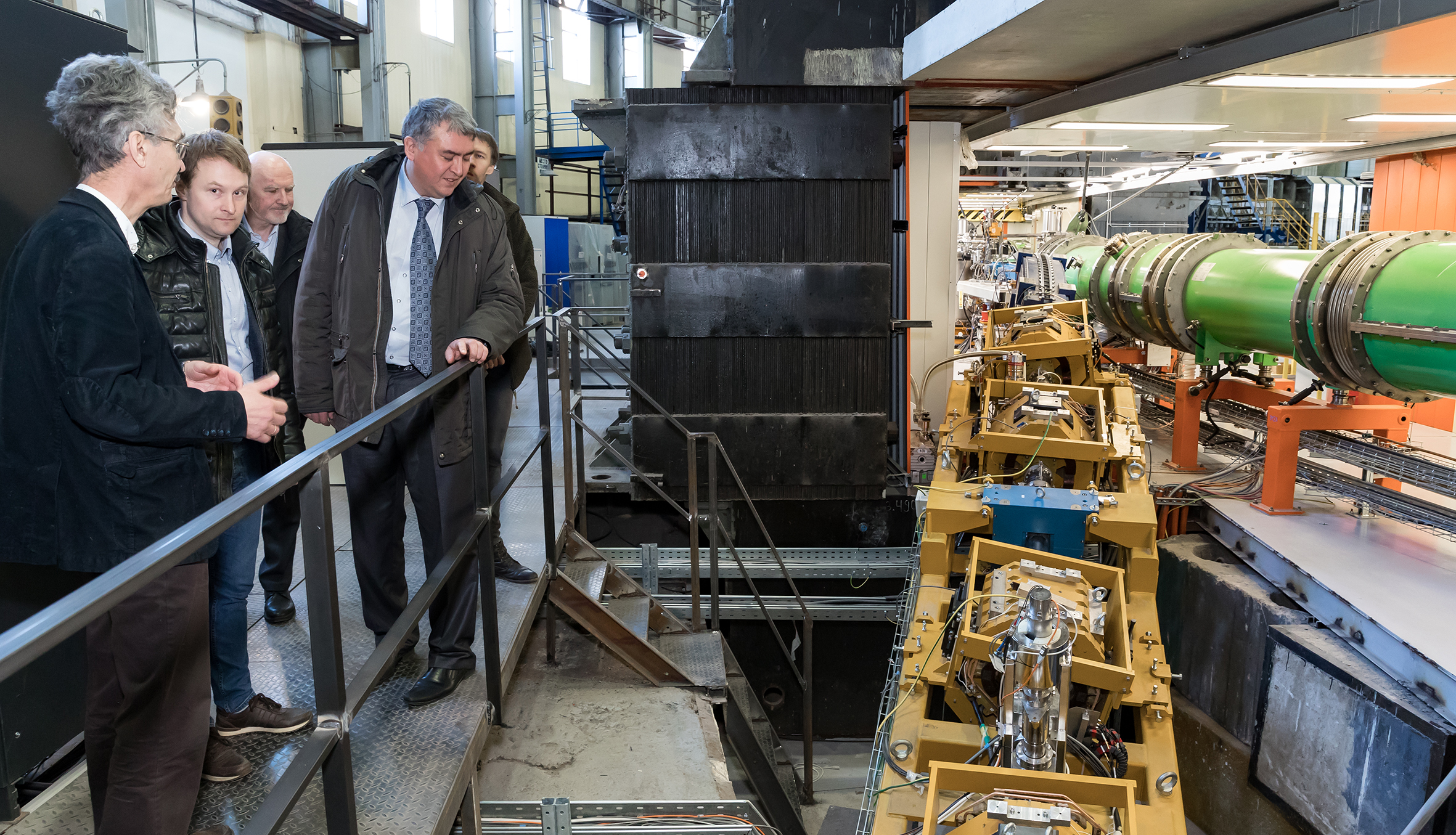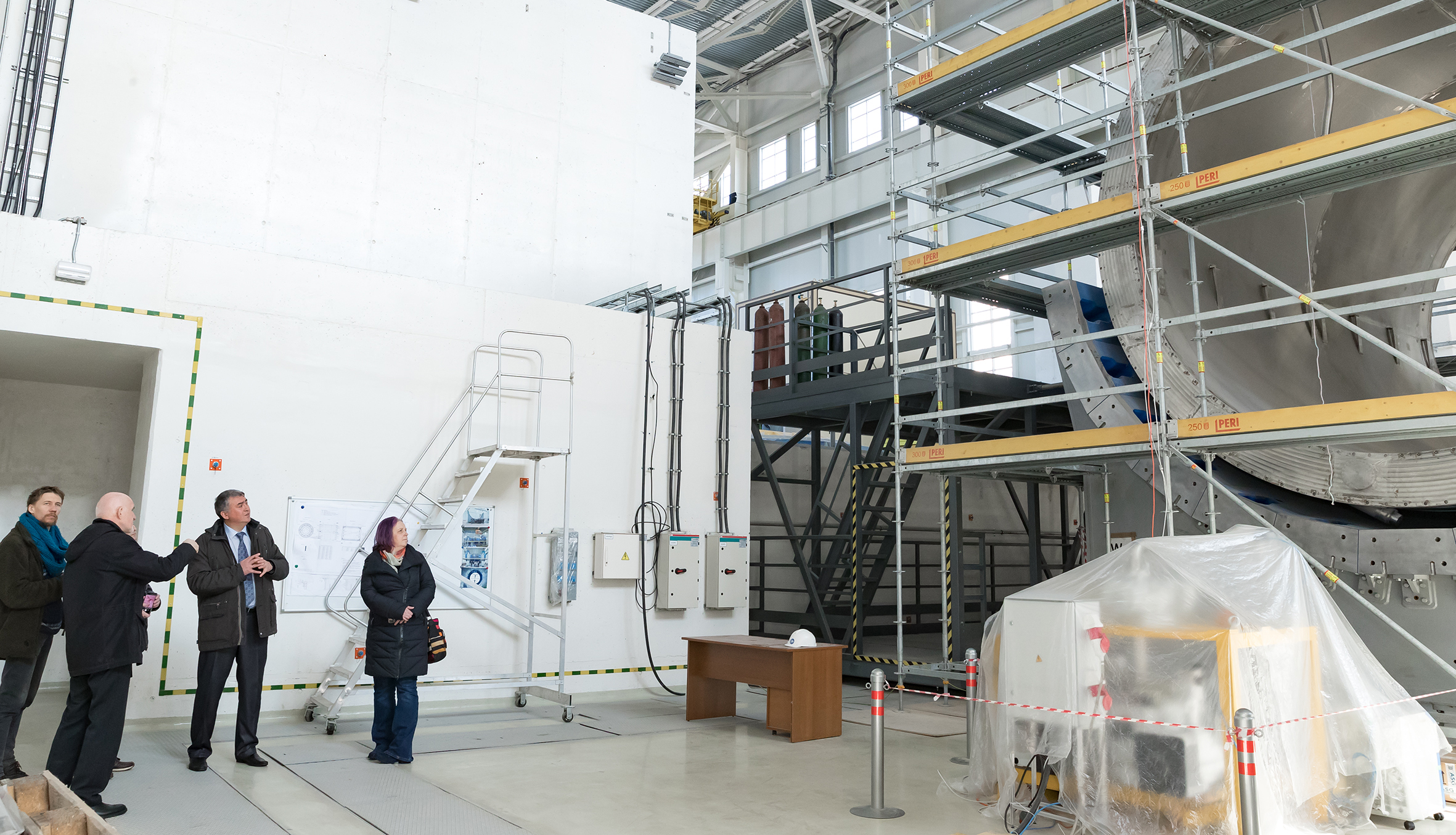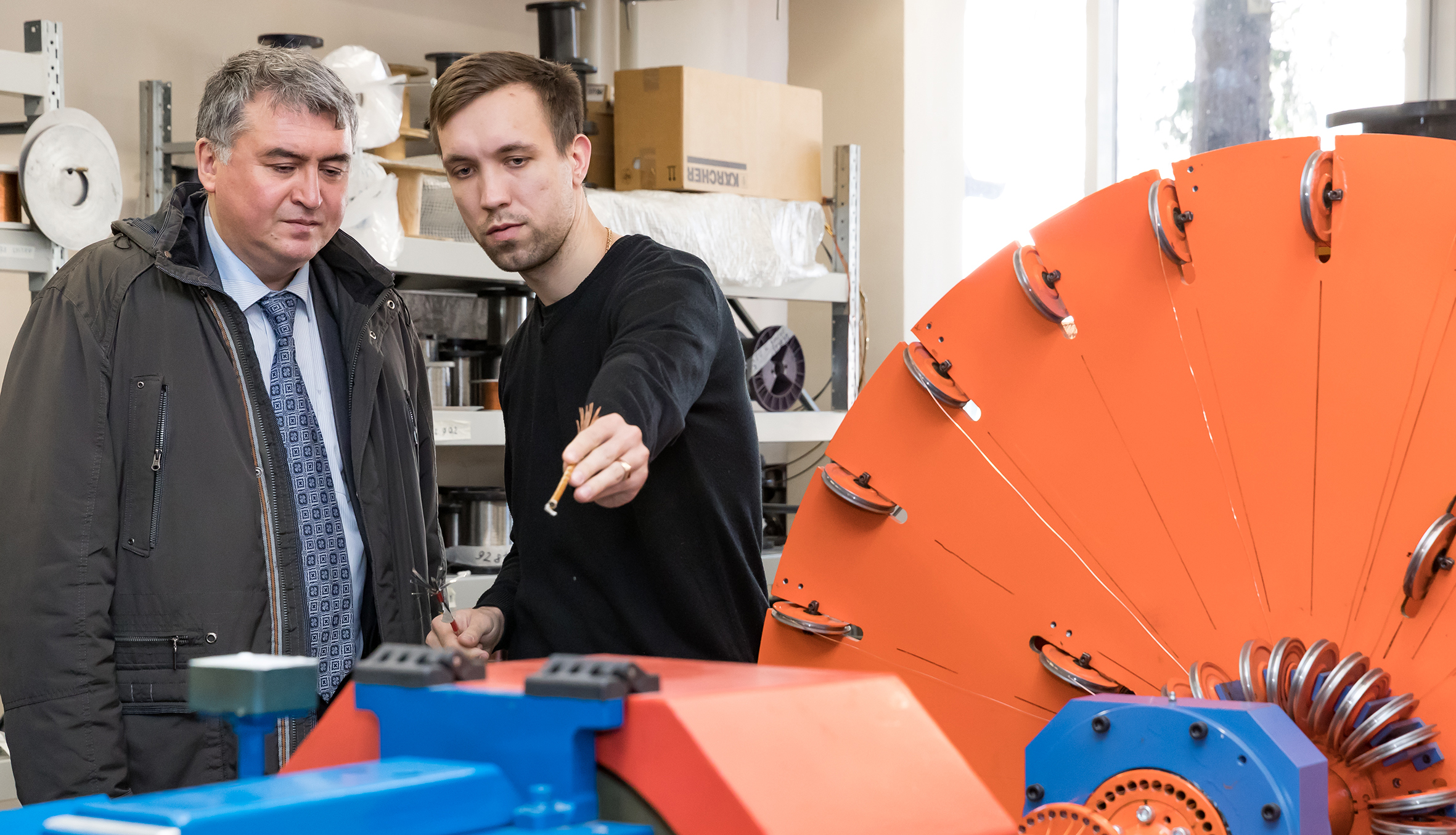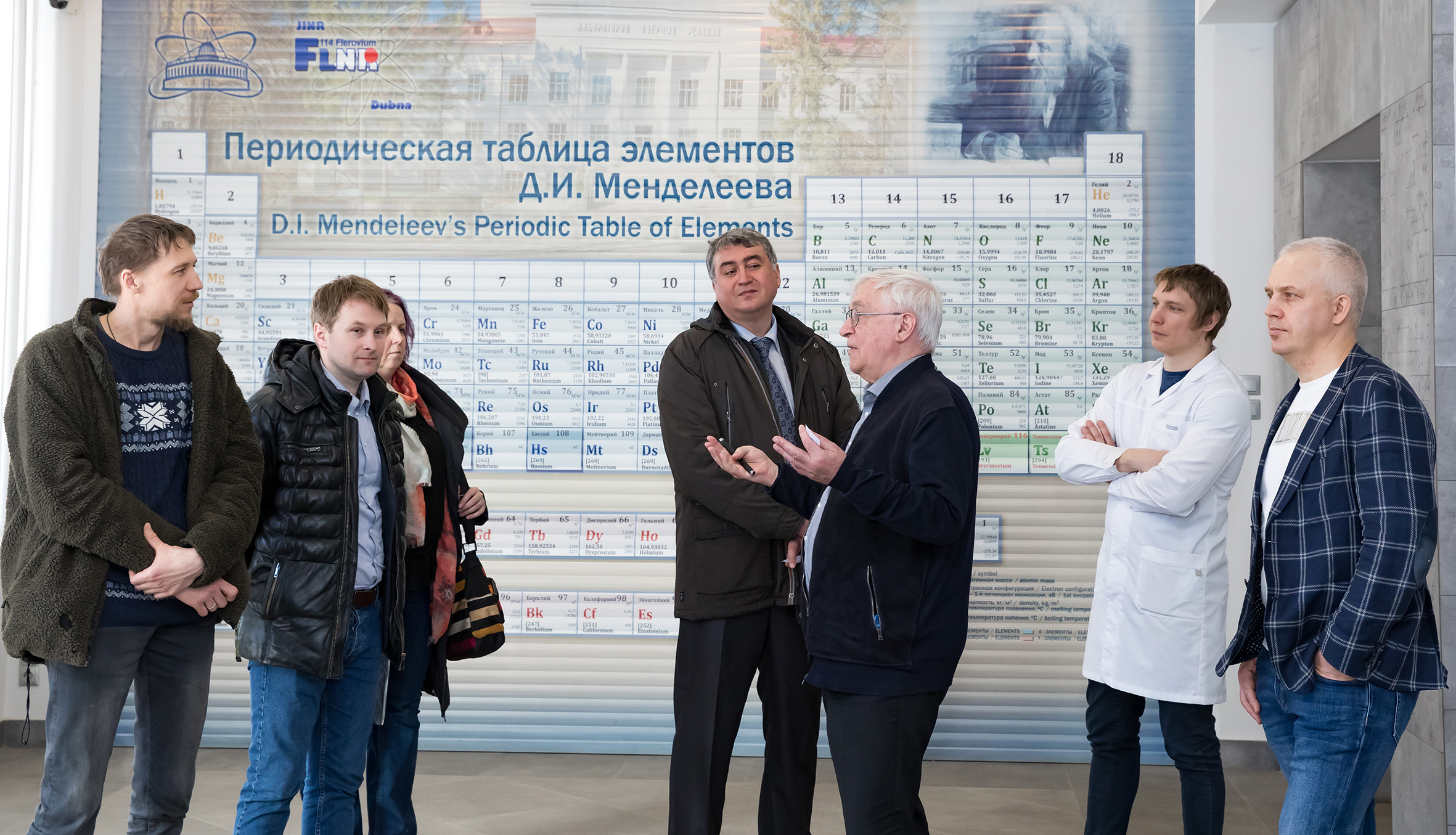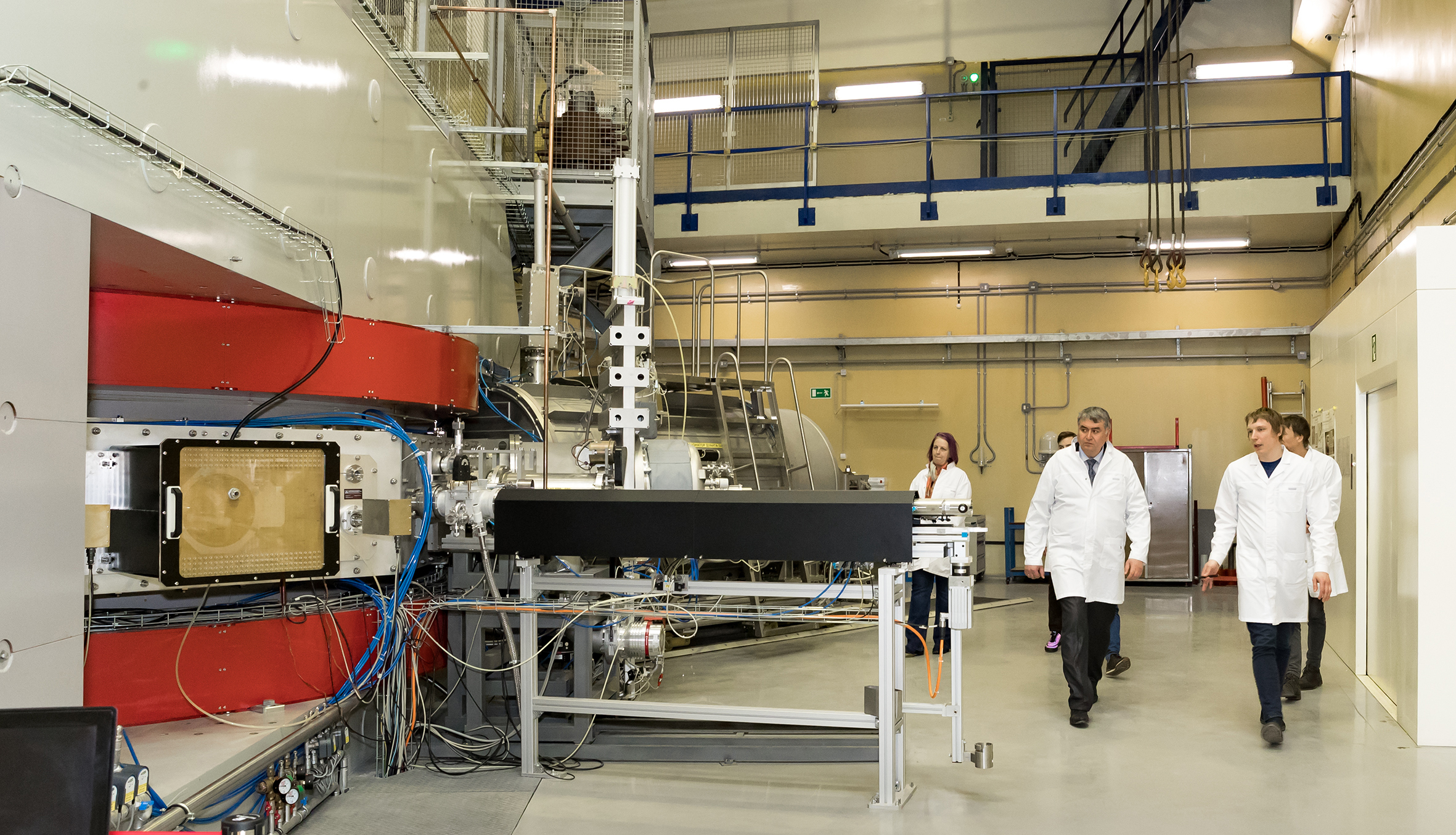JINR expands cooperation with NArFU
News, 08 April 2022
On 5 – 6 April, representatives of the Northern (Arctic) Federal University named after M.V. Lomonosov (Arkhangelsk) visited the Joint Institute for Nuclear Research. The main purpose of the delegation’s visit was to search for new directions for expanding cooperation with JINR in connection with the recent opening of the JINR Information Centre at NArFU. A number of discussions on existing joint projects took place in JINR laboratories as well as a meeting with the JINR Directorate.
The delegation included Vice-Rector for Innovative Development, Scientific Leader of World Class Research and Education Centre “Russian Arctic”, Head of the Department of Fundamental and Applied Physics of the Higher School of Natural Sciences and Technologies of NArFU Doctor of Physics and Mathematics Marat Eseev, Professor of the Department, Doctor of Physics and Mathematics Dmitry Makarov, and Senior Professor of the Department, Head of the JINR Information Centre at NArFU Andrey Goshev.
At the meeting in the JINR Directorate, the participants of the delegation were welcomed by JINR Scientific Leader Victor Matveev, JINR Chief Scientific Secretary Sergey Nedelko, Head of the International Cooperation Department of JINR Dmitry Kamanin, and UC JINR Deputy Director Alexander Verkheev.
The visit of NArFU representatives is the first practical step in the implementation of the cooperation agreement signed by JINR with the interregional Scientific and Educational Centre (SEC) “Russian Arctic: New Materials, Technologies, and Research Methods” in March this year. It includes the following regions of the Russian Federation as participants: the Arkhangelsk and Murmansk regions, Nenets Autonomous Okrug, and also the Republic of Karelia and the Komi Republic as Associate Members. “15 such centres have been created in Russia. Their idea is to combine business, science, and education and implement scientific and technical projects in the interests of regional development,” Marat Eseev said.
Speaking about the new JINR Information Centre at NArFU, which was inaugurated on 18 March, guests noted a great interest in its future education outreach among high school students, students, physics teachers.
The JINR-NArFU cooperation covers a wide range of scientific interests in the fields of both fundamental (theoretical physics) and applied science. Materials science is a promising direction for the development of interaction. It includes both materials for shipbuilding and the joint research on synthetic diamonds that is already being conducted with the Flerov Laboratory of Nuclear Reactions. It was noted that the Centre for Collective Use “Arktika” of chemical analytical equipment, mass spectrometry, and the nanocentre or the FLNR Centre of Applied Physics could be mutually useful.
The parties discussed the cooperation in the fields of life sciences, in particular, the expected participation of staff members of the Laboratory of Neutron Physics in the expedition to the Novaya Zemlya and Franz Josef Land archipelagos. Environmental studies, biodiversity research, as well as human adaptation to extreme conditions are conducted in the expeditions to the Arctic, which are organized regularly 2 – 3 times a year by the University.
Arkhangelsk physics students were invited to the practice in the Bogoliubov Laboratory of Theoretical Physics, as well as to the June Conference of Young Scientists and Specialists in Alushta.
“I see that there are close ties between our Institute and your university,” Victor Matveev summed up the results of the meeting. “There is a list of scientific areas that should be supported, and we are all interested in expanding the cooperation.”
“We are deeply interested in developing and strengthening our cooperation,” Marat Eseev said.
The programme of the visit of the representatives of the Northern (Arctic) Federal University was supplemented with working meetings in the Laboratory of Nuclear Problems, the participation in a BLTP seminar, a visit to the NICA complex in the Laboratory of High Energy Physics, a visit to the DC-280 cyclotron and the nanocentre in FLNR, as well as the discussion of interaction in the fields of life sciences in the Laboratory of Neutron Physics and the Laboratory of Radiation Biology.


